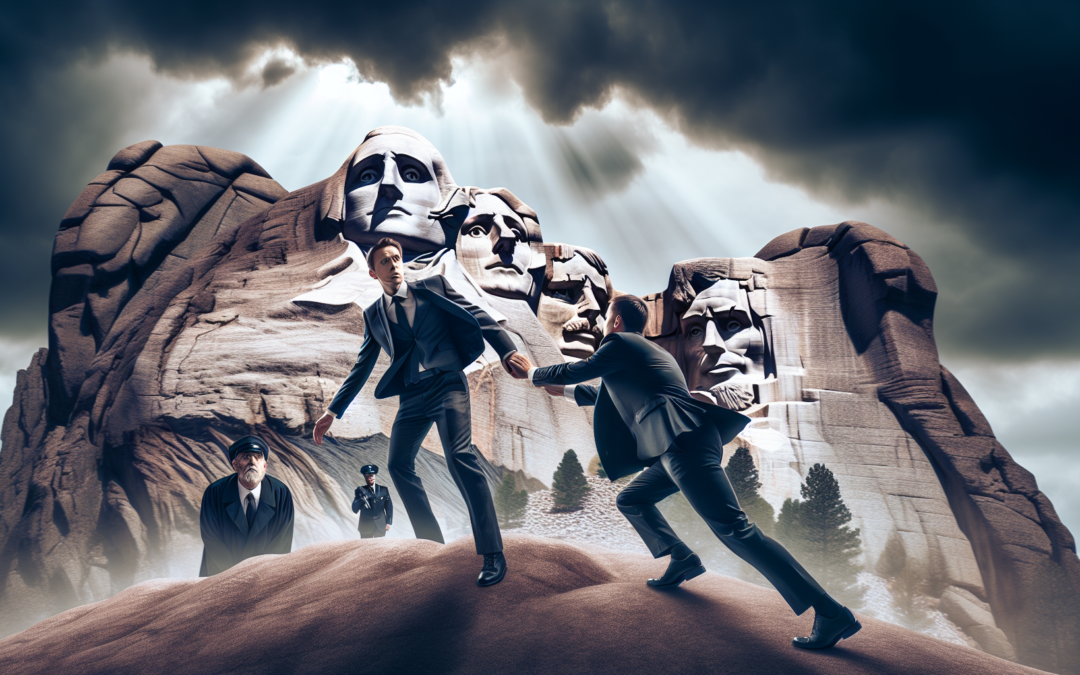Behind the Badge: A Day in the Life of Federal Park Authorities
In an era where every action by law enforcement is intensely scrutinized and analyzed, federal park authorities—the unseen guardians of our nation’s most revered monuments—operate under Herculean pressures. The incident involving auditor Austin Whitsitt at a national park serves not only as a vivid tableau of public tension but amplifies the symphonic demands placed on those vigilant officers who signed up to protect and serve both people and landmarks.
The Challenge of Background Noise
National parks aren’t just quiet canvases for reverence and reflection; they are dynamic environments alive with the hum of people, the rhythm of nature, and, unfortunately, the potential for disruption. For park officers, the challenge is akin to picking out a single voice in a cacophonous crowd. Amid throngs of visitors, protecting historical integrity can seamlessly shift into maintaining public order—a delicate task that requires both vigilance and diplomatic nuance.
When a situation—such as a peaceful audit—begins to simmer into an altercation, it scrambles quickly from a minor concern to a significant issue. Officers face a torrent of diagnostic assessments. Is the individual a danger to themselves or others? What’s the potential for escalation? Encountering these volatile variables, law enforcement agents are left with often seconds-long decisions that could lead not only to career-altering consequences but community-wide ripples.
The Officer’s Reflex: Instinct, Training, and Decision-Making
Instinct is a potent tool for officers, yet it’s one finely honed through grueling hours of training. Every critical situation demands drawing on extensive preparation—a rollicking fusion of rigorous techniques and empathic, human elements. Whether at the park’s gates or the quiet corridors behind the iconic carvings, the ability to maintain composure under the brow of adversity becomes the cornerstone.
Federal park agents operate with nuanced procedural methodologies designed to bring each scenario back from the brink. Questions trained to strike with accuracy: Is engagement necessary? What physical cues are present? These steely calculations derive not from a machine-like rote but a helix of intuitive advisement empowered through rigorous training.
The Burden of Dual Allegiances
National monuments, such as those under the watch of park authorities, represent more than rock and stone: they embody collective narratives, spun and stirred through countless generations. Given this charge, officers shoulder the dual responsibility of honoring histories while protecting modern civil freedoms. Each day involves walking a precarious tightrope spanning stringent protective mandates and increasingly sensitive public sentiment.
Incidents like the Whitsitt confrontation underscore an officer’s mosaic duty—often sidestepping constitutional landmines while preserving ethical clarity. Authorities cope with the ever-looming possibility that their exactitude will be swathed in the furious winds of public opinion and media dissection.
Emotional Tides: Officers as Humans First
Beyond the uniforms, these law enforcers return daily to homes of family and personal adversity. As much as duty makes them public figures, they remain profoundly human—a point often torrents beneath media narratives and public critique.
An officer navigates not just tactical proficiency but a profound emotional reservoir. The balance between procedural justice and humane conditions requires internal fortitude. It doesn’t undermine their responsibility—indeed, it accentuates their role’s emotionally sapping demands. The surge of collective memories, patience often worn thin by the anxious eyes of visitors, compassionate sensitivity to citizen concerns—all converge in an unseen yet profound tension.
The Humanity Behind the Badge
At the bones of each federal park authority lies a steadfast commitment—to public safety, historical integrity, and individual rights. Their story is as much about honor as it is duty—a narrative thread interwoven with integrity, dedication, and moments of human union amidst tensions.
When officers come forward, pledging themselves to protect both the grounds and those who move across them, they bond not just by an intellectual urge but a visceral pledge to guard our country’s shared narrative against fraying.
The next time you stand before one of these iconic sites, remember—the human stories dissembled into place beneath the marble and mortar. Recapture the internal stories driving those who ensure you’re granted the opportunity to be awed, inspired, and reflective—not just plucking it from the lands stretched around us but acknowledging how people too—guardians of memory—band silently and resolutely in its foreground.
To understand more fully the complexities of this encounter. watch John Ligato’s in-depth episode and visit The John Ligato Show YouTube Channel as well as the show’s Facebook page to join in the conversation respecting freedom—both historic and immediate.

Recent Comments